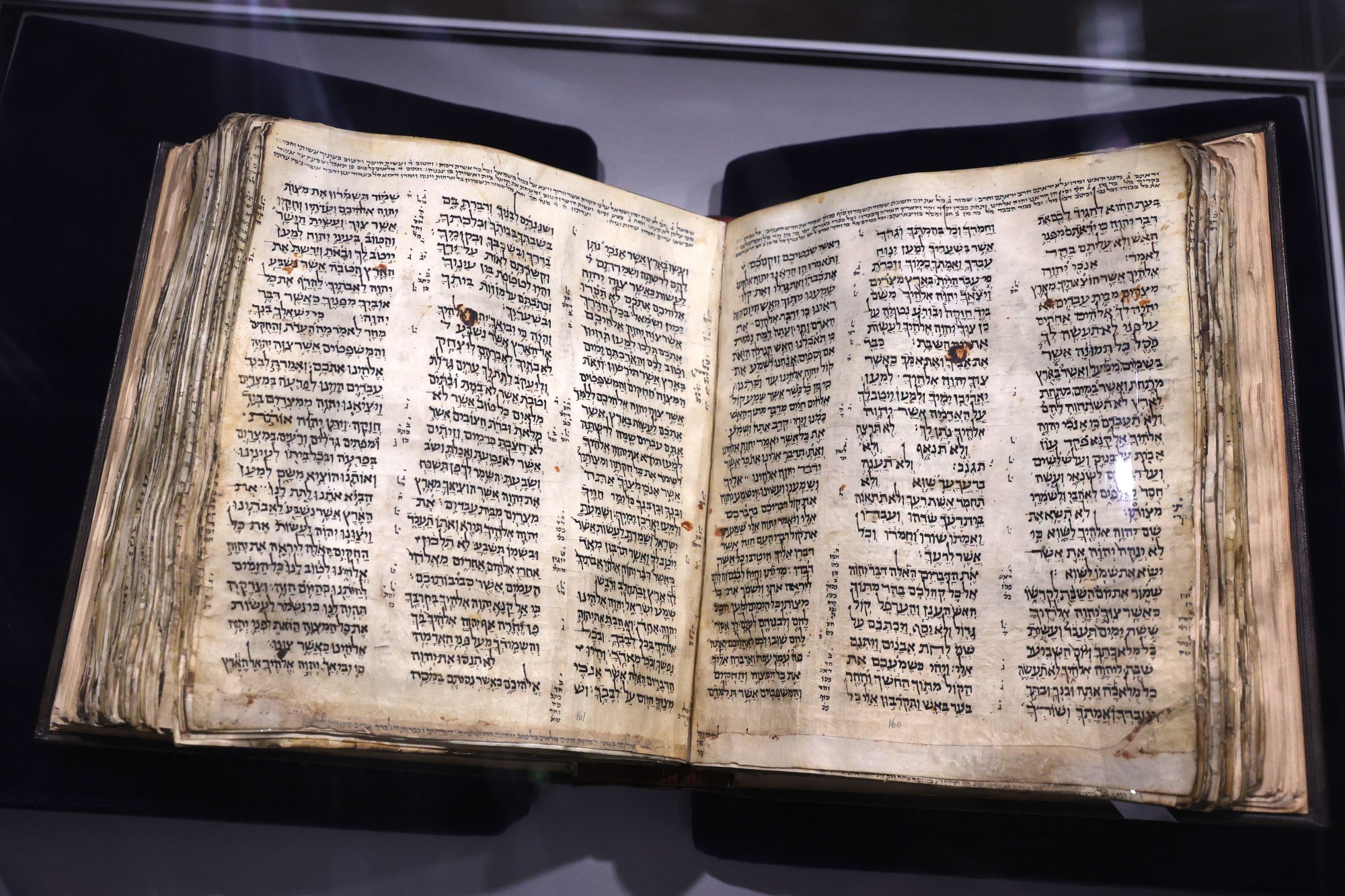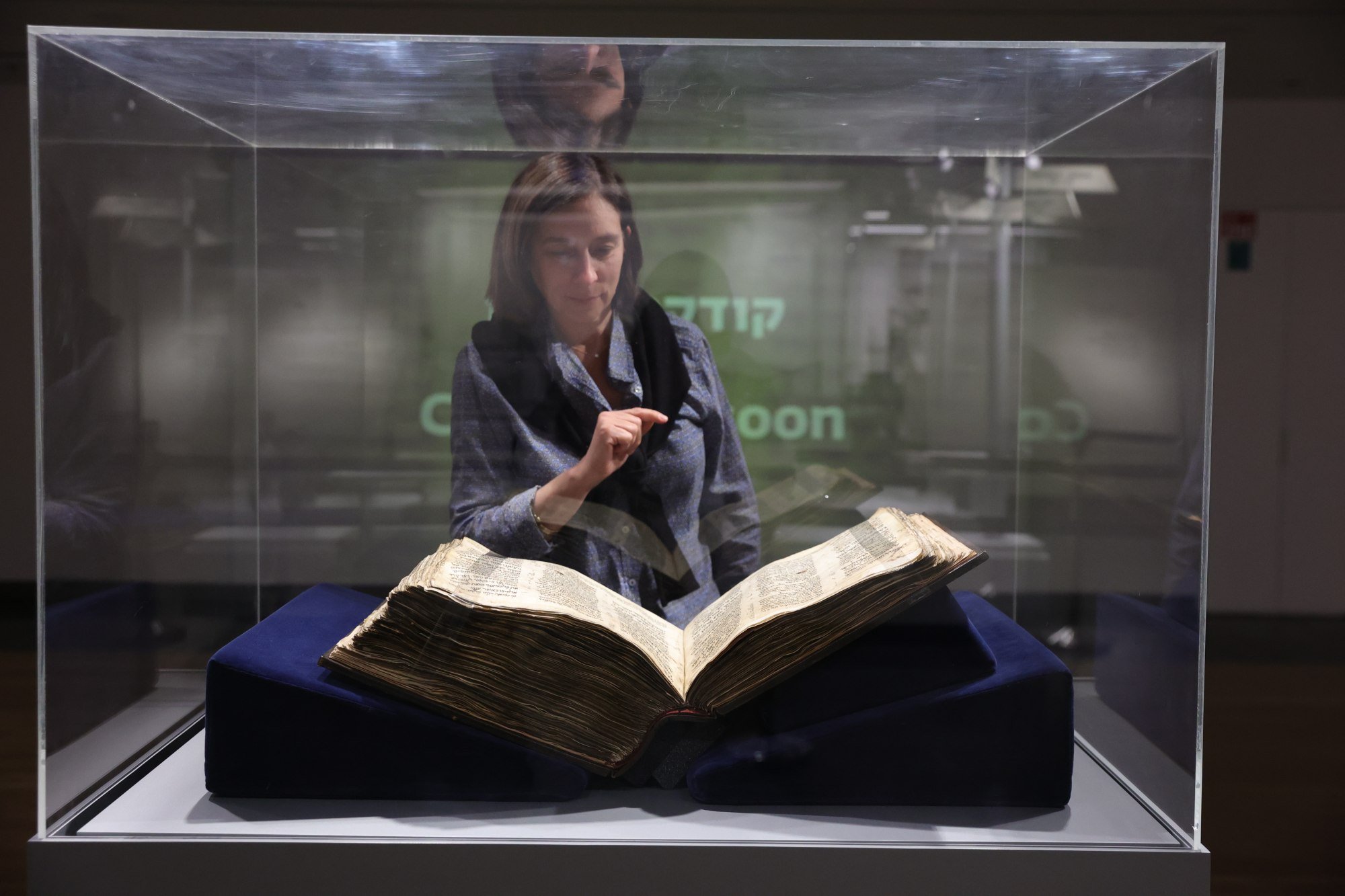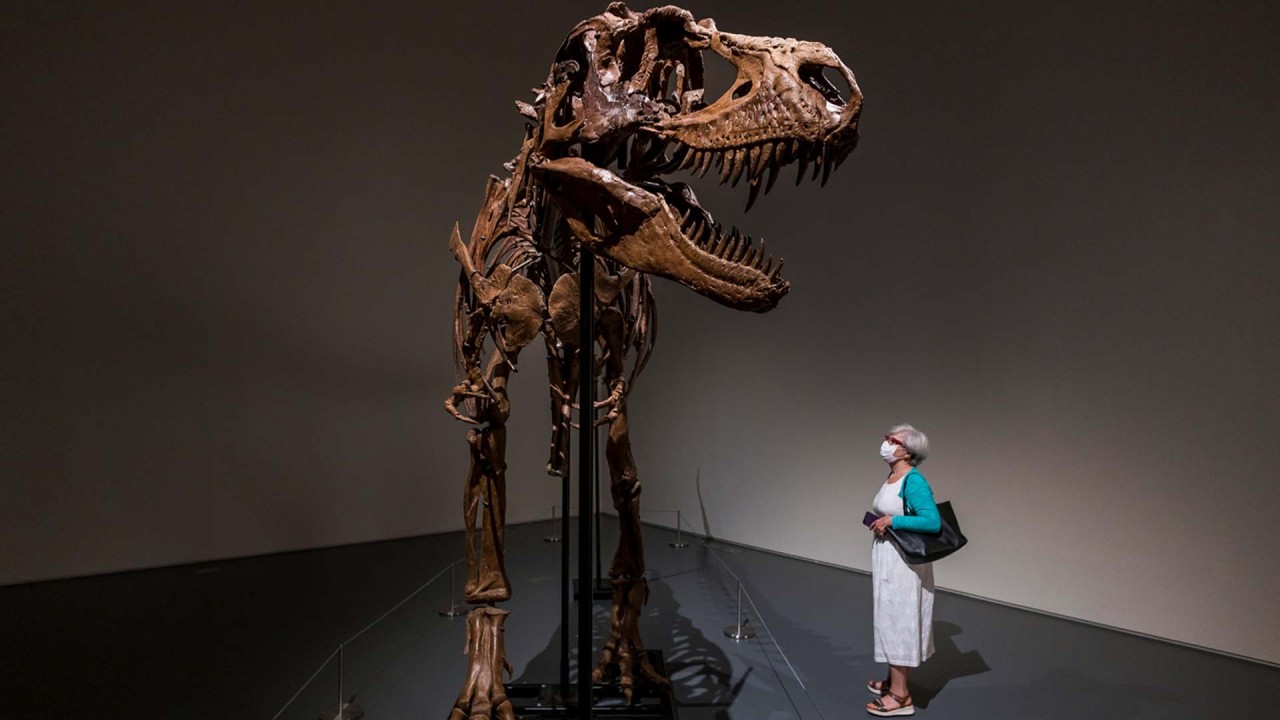
Sotheby’s hopes for record US$30 million sale of ancient Hebrew Bible
- The 1,100-year-old leather-bound, handwritten parchment tome known as the Codex Sassoon contains almost the entirety of the Hebrew Bible
- On Wednesday Tel Aviv’s ANU Museum of the Jewish People opened a week-long exhibition of the manuscript, part of a tour of the artefact in the UK, Israel and US
One of the oldest surviving biblical manuscripts, a nearly complete 1,100-year-old Hebrew Bible, could soon be yours – for a cool US$30 million.
The Codex Sassoon, a leather-bound, handwritten parchment tome containing almost the entirety of the Hebrew Bible, is set to go on the block at Sotheby’s in New York in May. Its anticipated sale speaks to the still bullish market for art, antiquities and ancient manuscripts even in a worldwide bear economy.
Sotheby’s is drumming up interest in hopes of enticing institutions and collectors to bite. It has put the price tag at an eye-watering US$30 million to US$50 million.

On Wednesday, Tel Aviv’s ANU Museum of the Jewish People opened a week-long exhibition of the manuscript, part of a whirlwind worldwide tour of the artefact in the United Kingdom, Israel and the US before its expected sale, on Wednesday.
“There are three ancient Hebrew Bibles from this period,” said Yosef Ofer, a professor of Bible studies at Israel’s Bar Ilan University: the Codex Sassoon and Aleppo Codex from the 10th century, and the Leningrad Codex, from the early 11th century.
Only the Dead Sea Scrolls and a handful of fragmentary early medieval texts are older, and “an entire Hebrew Bible is relatively rare”, he said.
Starting a few centuries before the Codex Sassoon’s creation, Jewish scholars known as Masoretes started codifying oral traditions of how to properly spell, pronounce, punctuate and chant the words of Judaism’s holiest book. Unlike Torah scrolls, where the Hebrew letters are devoid of vowels and punctuation, these manuscripts contained extensive annotation instructing readers how to recite the words correctly.
Precisely where and when the Codex Sassoon was made remains uncertain. Sharon Liberman Mintz, a senior Judaica specialist at Sotheby’s, said that radiocarbon dating of the parchment gave an estimated date of 880 to 960. The codex’s writing style suggests its creator was an unspecified early 10th-century scribe in Egypt or the Levant.
Hidden corridor found in Great Pyramid by using cosmic rays
“It’s like the emergence of the biblical text as we know it today,” Mintz said. “It’s so foundational not only for Judaism, but also for world culture.”
Though it is certainly ancient and rare, scholars say the Codex Sassoon does not match the pedigree and quality of its contemporary – the Aleppo Codex.
“Any Masoretic scholar in their right mind would take the Aleppo Codex over the Sassoon Codex, without any regret or hesitation,” said Kim Phillips, a Bible expert at the Cambridge University Library. He said the scribal quality was “surprisingly sloppy” compared to its counterpart.
The Aleppo Codex, dated to around 930, has been considered the gold standard of the Masoretic Bibles for around 1,000 years. The Codex Sassoon’s margins contain an annotation from a later scholar who says he checked its text against the Aleppo Codex – referring to the manuscript by the Arabic title a-Taj, meaning “the crown”.
“The Aleppo Codex is more precise than the Sassoon Codex, there’s no doubt,” Ofer said. “But because it’s missing (a third of its pages), in those parts that are absent, there is great significance to this manuscript.” The Codex Sassoon’s 792 pages make up around 92 per cent of the Hebrew Bible.
These venerable manuscripts were protected and treasured by Syrian Jewish communities for centuries until the 20th century. How the Sassoon Codex survived the ages is an epic in its own right.
A note on the manuscript attests to its owners in centuries past: A man named Khalaf ben Abraham gave it to Isaac ben Ezekiel al-Attar, who gave it to his sons Ezekiel and Maimon.
It later migrated east to the town of Makisin in what’s today northeast Syria, where it was dedicated to a synagogue in the 13th century. At some point in the following decades, the synagogue was destroyed and the codex entrusted to Salama ibn Abi al-Fakhr until the synagogue was rebuilt.
It never was rebuilt, but the book survived.
The bible’s whereabouts for the next 500 years remain uncertain until it resurfaced in Frankfurt, Germany, in 1929, and was bought by a legendary collector of Jewish manuscripts whose name it still bears.

David Solomon Sassoon was a Mumbai-born son of an Iraqi Jewish business magnate who filled his London home with a massive collection of Jewish manuscripts.
“His capacity was astounding, both in terms of number but also in terms of what he was able to find,” said Raquel Ukeles, head of collections at Israel’s National Library.
Sassoon roved across Europe, the Middle East and North Africa buying up old books and by his death in 1942, he had amassed more than 1,200 manuscripts.
Sassoon’s estate was broken up after he died and the codex was sold by Sotheby’s in Zurich in 1978 to the British Rail Pension Fund, which had started investing in art several years earlier, for around US$320,000.
The pension fund flipped the Codex Sassoon 11 years later for 10 times its hammer price. Jacqui Safra, a banker and art collector, bought it in 1989 for US$3.19 million and is now putting it up for auction.
Signed Charles Darwin manuscript sells for nearly US$900,000 at auction
If the target price is realised, the Codex Sassoon could not only eclipse the most expensive Jewish document ever sold – the 2021 sale of the Luzzatto Machzor, a 14th-century prayer book, for US$8.3 million – it also could break the record for the priciest historical document ever sold at public auction. That honour is currently held by a 1787 copy of the US Constitution sold in 2021 for US$43 million.
Yoel Finkelman, a former curator of Judaica at Israel’s National Library, said that prices for Judaica manuscripts have skyrocketed in recent years, but Sotheby’s proposed range is “a different league.”
Few institutions, and only a small handful of ultra-wealthy collectors, could afford such a price tag. There is precedent, however, of museums joining forces to buy prized manuscripts or philanthropists donating their purchases to libraries and other bodies.
Ukeles said that the National Library managed to purchase seven of Sassoon’s manuscripts when his collection was auctioned off in the 1970s, “but this one got away. And so for us, this is an opportunity to bring this great treasure home.”


